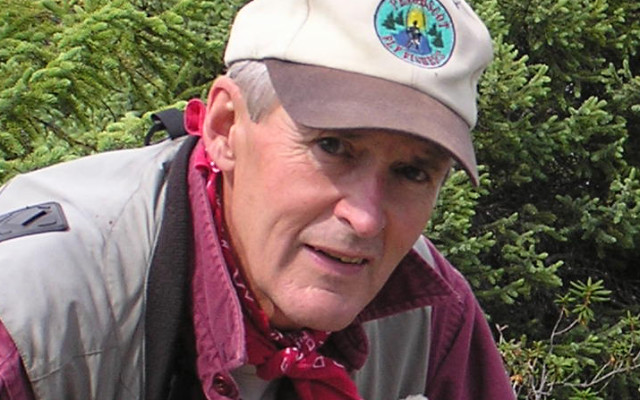
It’s ok to sneak a peek at flies on a hat
More than enough books have been written about fly fishing to fill the shelves on one floor at the Library of Congress. As a matter of fact, in my small office above our garage, there are more than 40 books about fly fishing. Topics run the gamut from fly tying, fly casting and fly-rod making to insect hatches and Atlantic salmon angling in the Canadian provinces.
What I have yet to find in all of this literature, however, is much about a fly fisherman’s ethical obligations when fishing solo, or when sharing a popular piece of water with a fellow angler. Although there are exceptions, most fly fishermen that I have encountered over the years tend to be friendly, polite, even to the point of being thoughtful. Of course, the Golden Rule can be an ethical guide: treat your fellow angler as you would expect to be treated by him or her.
The understood exception, of course, to all of this civility and propriety is when there is a snowstorm of caddis flies skittering hither and yon over, about and around the salmon waters of the Big Eddy on the West Branch of the Penobscot River. Then all bets are off.
An avid angler with whom I often share a canoe on the Eddy is always apologetic when, during this caddis storm and fish-feeding frenzy, he shoots a long line over and across my floating line in an attempt to reach a distant rise. “So sorry,” he intones, “I hope you understand. That was a helluva nice fish. I am in this for the tug, ya know!”
It is sometimes difficult when an angler allows passion to overrule gentlemanly behavior. There is a more nuanced ethical question that has always haunted me, however. When, if ever, is it acceptable to pop this question to the guy in the next boat over, who seems to be the only angler hooking fish. “Say, that was a feisty salmon, huh? If you wouldn’t mind my asking, what did it hit?”
I almost always think it, but rarely ask it. Pride you know. On the Big Eddy, where the salmon are schooled (excuse the pun) in tippet avoidance and insect identification, it can get frustrating. And very tempting to grovel and flat out ask the question across the swirling, foam-specked water. It’s like those days at the school dance when you hesitated, even though she was cute and smiled at you. What if she declined your invitation to dance? The happy angler with all the hookups could simply smile back, like Betty Lou, at your nervous query and with a smile say, “I’ll never tell.” Or even worse, “It ain’t none of your business, Bub.”
There is another way to find out what fly that guy’s using without risking loss of face, or pushing the bounds of ethical angling. It’s called sneakin’ a peek.When the lucky angler comes ashore, simply walk by him casually and check out his fly-festooned fishing cap. I did this with one successful and seasoned Big Eddy regular, Scott MacArthur.
His hat told the story. He was catching all those remarkable salmon on a #16 elk hair caddis with a Nancy’s Prayer dropper! It was perfect. No words were spoken. No self-esteem compromised and no offenses taken.
You see, MacArthur, like most of us aging anglers, spends half of his time on the water trying to thread tippets through #18 and #20 flies. Adding the dropper means at least another ten minutes when your line is not in the water. It becomes a time-invested lashup. So, when fishing ends, easier for him to pop the fly and dropper onto his hat for the next day, rather than break it down and return to the fly box.
As in other skill-related endeavors of this world, as the saying goes, old age and treachery will always win out over youth and hard work.
___________
The author is editor of the “Northwoods Sporting Journal.” He is also a Maine guide and host of a weekly radio program — “Maine Outdoors” — heard Sundays at 7 p.m. on “The Voice of Maine News – Talk Network.” He has authored three books; online purchase information is available at www.maineoutdoorpublications.com. or at www.sportingjournal.com. Contact email is: vpaulr@tds.net.